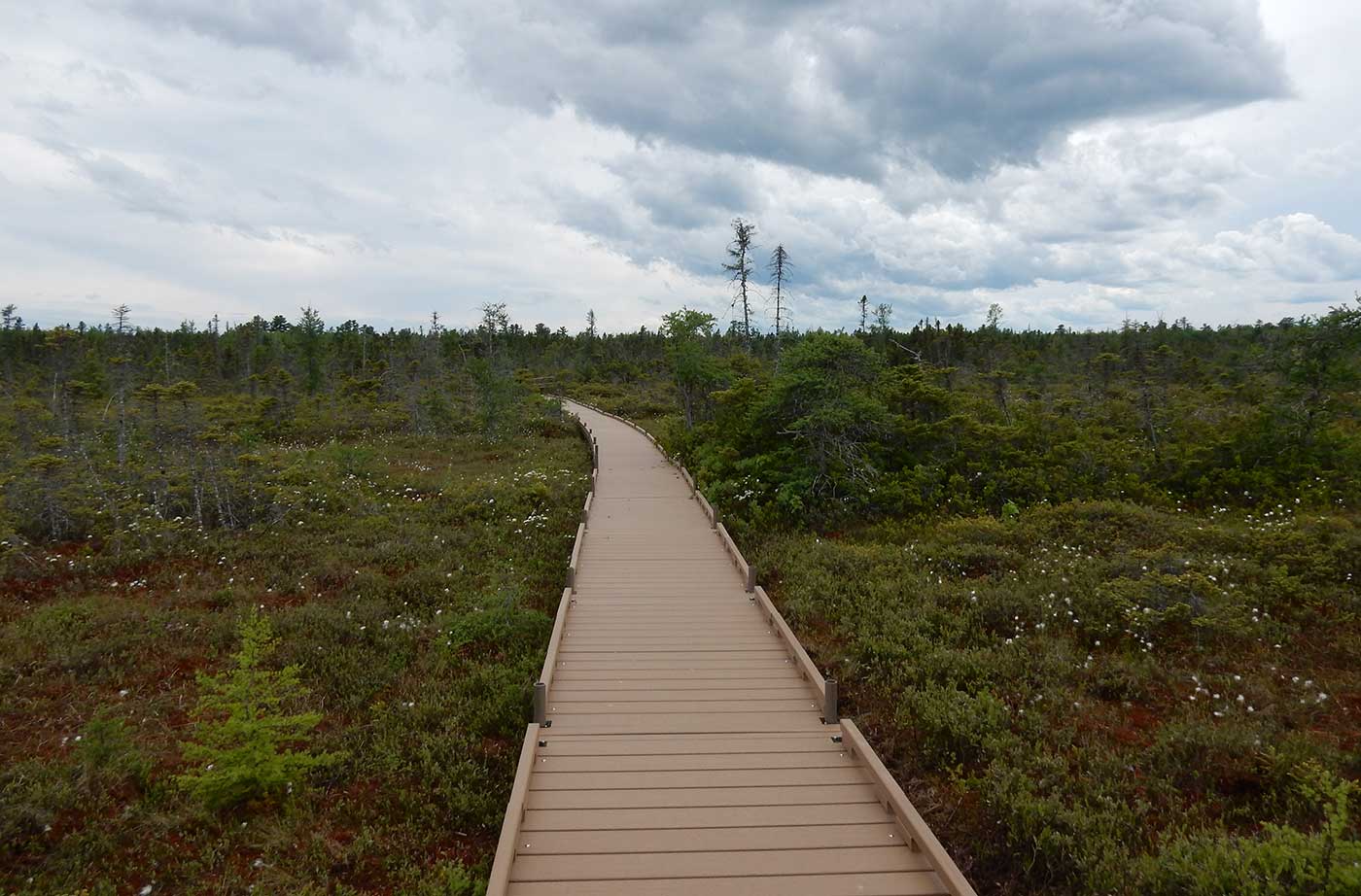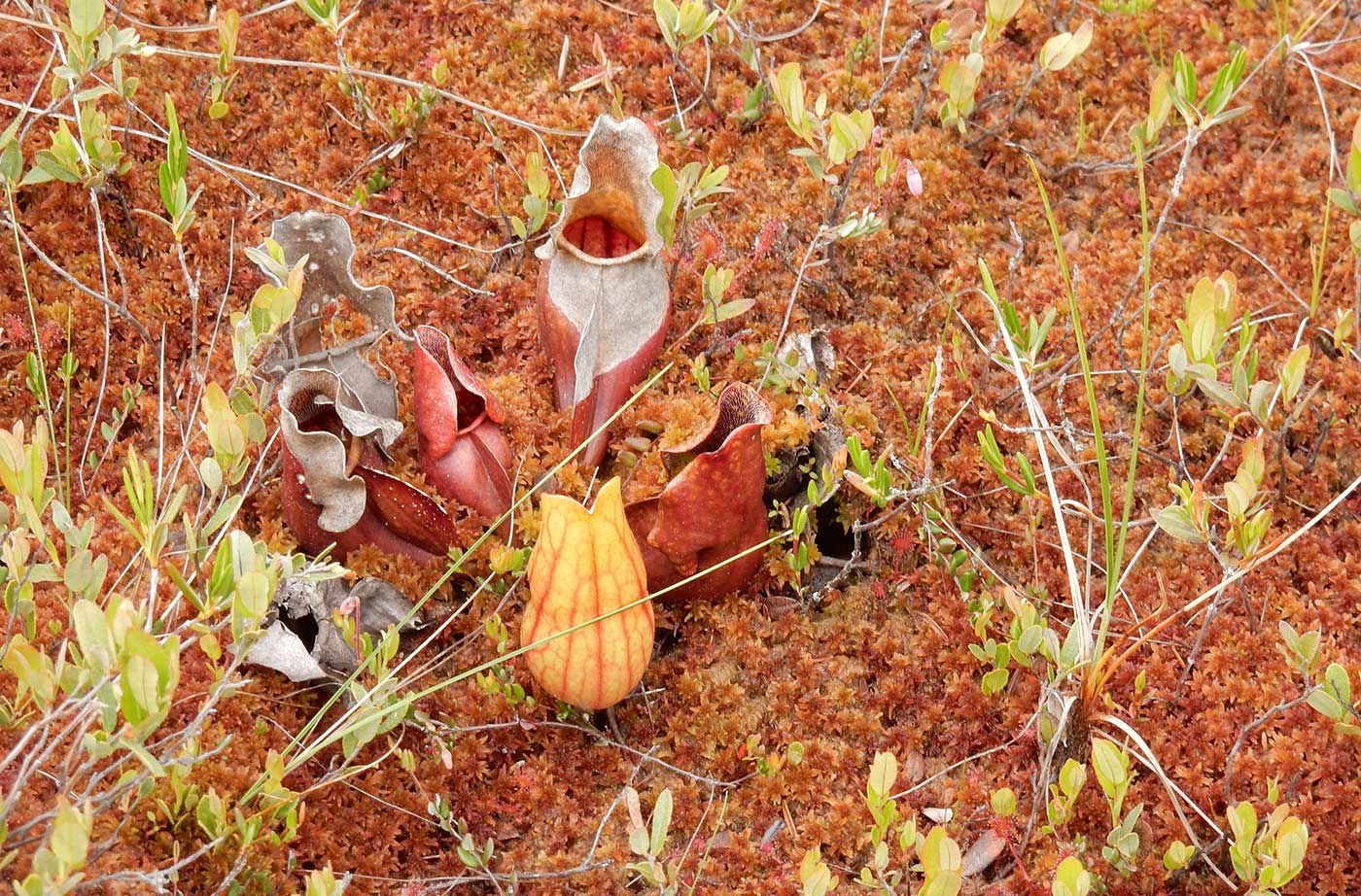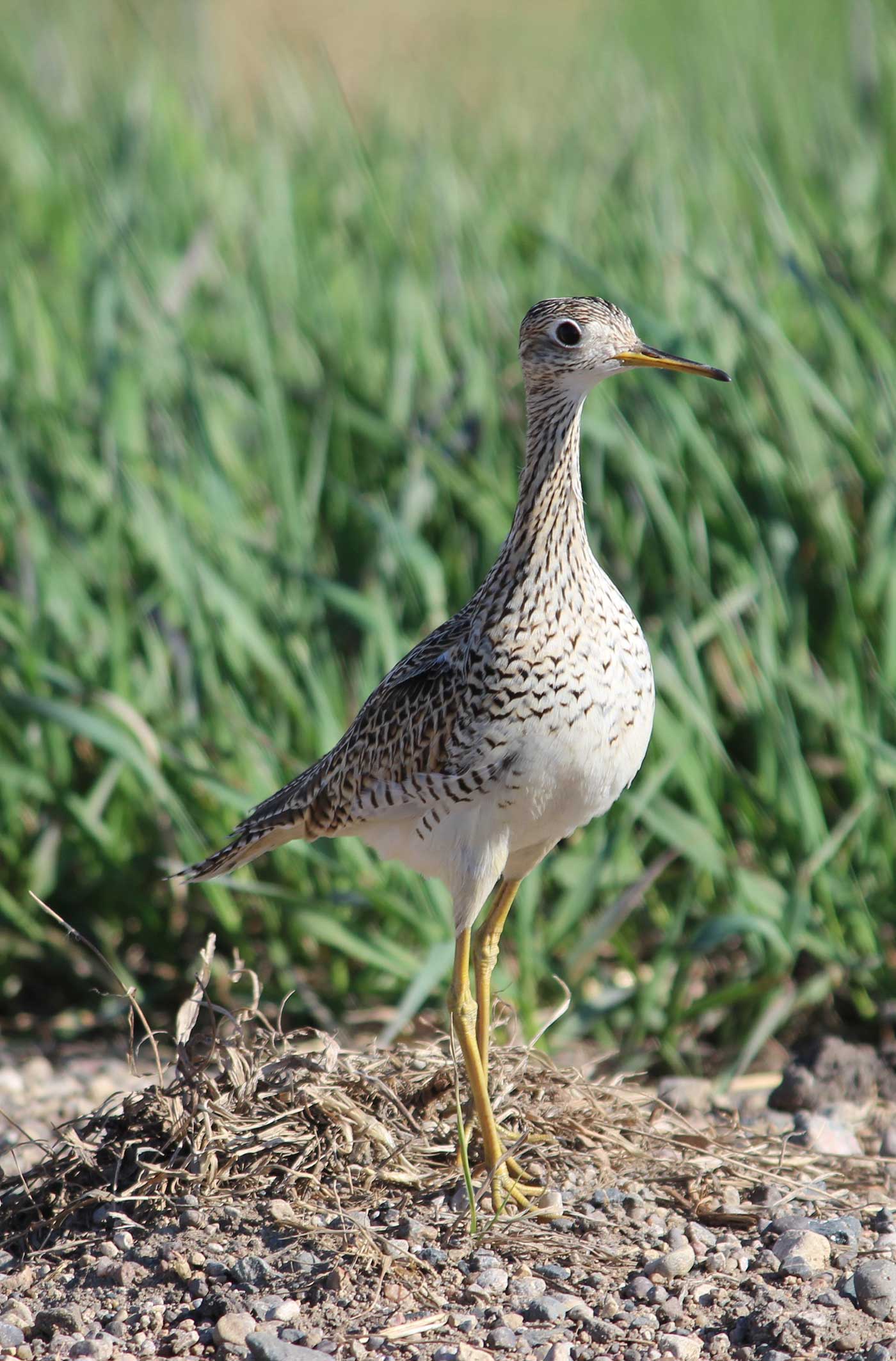Some dads get ties for Father’s Day. Some get tools.
Jeff wanted a Lincoln’s Sparrow.
Those first two gifts are pretty much guaranteed: we’ve never heard of a store running out of ties or power drills. Just check your friendly neighborhood store.
On the other hand, acquiring a Lincoln’s Sparrow takes some effort. Since we weren’t lucky enough to come across one during migration, we made a Father’s Day trek to the Orono Bog. A beautiful place to visit, with boardwalks leading through forested areas and then out over the vast bog.

Orono bogwalk (Photo by Allison & Jeff Wells)
We saw butterflies, wild flowers, pitcher plants, sundews. We heard Magnolia, Pine, Black-throated Green, Black-and-white, and Nashville Warblers; a Northern Waterthrush chimed in and so did Hermit Thrushes, Veery, Red-breasted Nuthatch—we even heard a drumming ruffed grouse.

Pitcher plant (Photo by Allison & Jeff Wells)
But no Lincoln’s Sparrow. White-throated, yes, but no Lincoln’s. Alas the bird remains unchecked on our “mindfulness birding big year” checklist—worse, we didn’t get to hear or see it.
The miss was a reminder that as June slides into July, we need to make some decisions. Now that we are in the midst of the breeding season, we can no longer expect to see migrant species just about anywhere. Birds have settled into their preferred habitats to establish territories, built their nests, and many are now raising their young.
Indeed, during the breeding season, to fill holes on our list (and experience the satisfaction of seeing more birds), we must seek out particular habitats as we did for the Lincoln’s Sparrow. On that order, we made a trip—also unsuccessful—to listen for the burry song of the Yellow-throated Vireo at our favorite spot in Monmouth.
But an especially big disappointment for us has been our visits to the many large hayfields in our area that have apparently become devoid of the sweet, whistled songs of the Eastern Meadowlark. This species was formerly fairly common across much of Maine (at least in the southern half of the state). We have stopped and listened at many locations where we used to find them. Sadly, they do not appear to be there anymore. In fact, meadowlarks are one of a suite of grassland birds showing rapid declines across much of their North America range, particularly here in Maine.
Fortunately, some of our forays have been more joyous.
During an impromptu morning recently we stopped at the former Brunswick Naval Air Base and heard what we had been missing: that distinctive series of long whistles that is the song of the Eastern Meadowlark. It floated in on the breeze from across the grasslands that surround the runways. It was too far away to see (we tragically failed to bring our scope), but it was beautiful to hear after finding that this distinctive music was gone from so many other grasslands.
While basking in that long-awaited song, another increasingly rare grassland bird song drifted in: the long “whoop-wheer” wolf whistle of a displaying male Upland Sandpiper. At first the song was barely audible; either the bird was flying very high in his display or was far off to the south (or both) but over time he must have moved closer. Regardless, he was seemingly invisible as he sang and displayed from high up in that bright, blue sky.

Upland Sandpiper (USFWS)
Upland Sandpipers are amazing birds. They travel each year from their breeding grounds in the grasslands of North America south to the Pampas grasslands of southern South America and back again. Here in Maine, there are now only a handful of locations where they still nest. It was good to know that one of them, the grasslands of the former base in Brunswick, still hosted at least a few.
This was a good day, one that made us mindful of how special so many of Maine’s birds are and the conservation challenges that we must take on if we want to them to be around for our kids and grandkids to see and enjoy.
As we write this, our Maine Big Year list stands at 188 species. More birds await us!











Leave a Reply